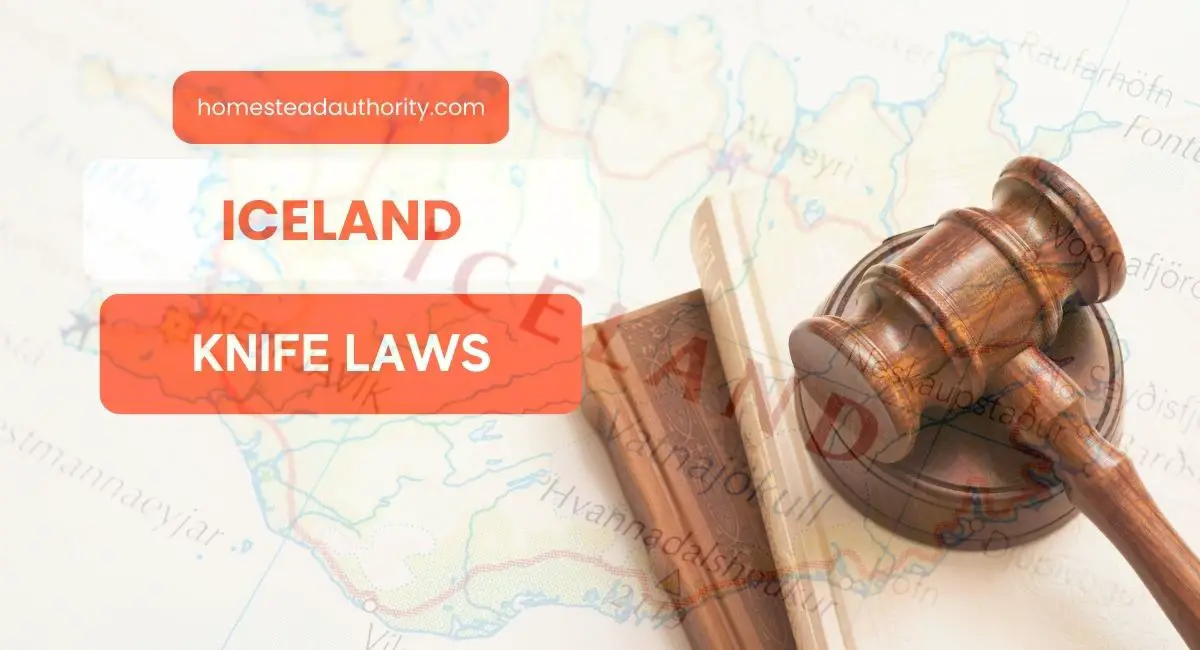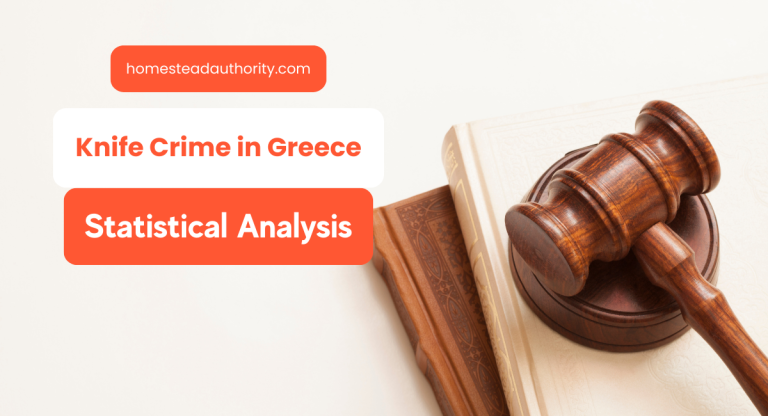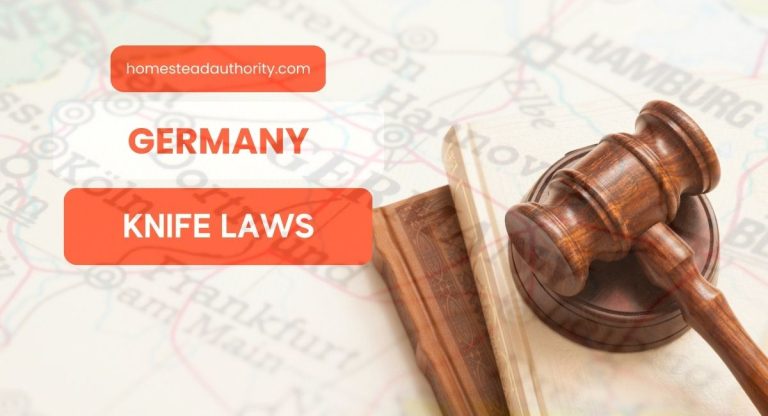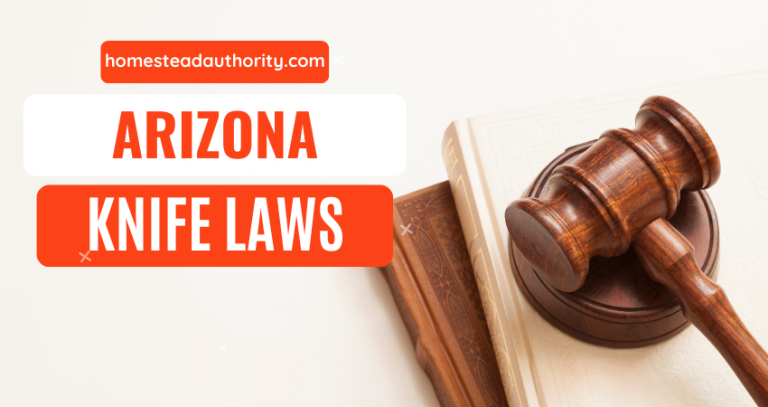Iceland Knife Laws: Everything You Need To Know About
The Iceland knife laws can get intimidating if you don’t have proper knowledge about the laws. With so much twisted information, it can get hard for an everyday citizen to understand these laws. So don’t worry about it as we have just made the laws as easy as possible to understand.
In this article, we will talk about all there is to the laws regarding knives with the easiest understanding. Thus, there’s no need to face charges or consult a lawyer if you carry a knife with you for a good purpose.
We have got everything from the illegal knives you shouldn’t think about owning to what size knife is legal to carry in Iceland. So without any further ado, let’s get started.
Highlights
Here are some of the highlights from our entire article that will give you an idea of what you are going to get in-depth information about;
- Any knife capable of stabbing is considered a weapon in Iceland.
- Any weapon is illegal for a citizen to carry, own, or import.
- 12 centimeters (from the tip to the end) is the length you are allowed to carry.
- 12 centimeters is also the limit that you are allowed to bring on customs.
- Exceptions for collectors can be made, and even illegal knives can be owned.
- We recommend avoiding sensitive areas like schools and government buildings.
- There’s no law for the type of carry for legal knives.
List Of Illegal Knives In Iceland
The Chapter V. Treatment of other weapons Article 30 has warned us about the knives that shouldn’t be owned, imported, or manufactured in Iceland.
Here they are;
- Penknife
- Drop Knife
- Drop Dagger
- Swords
- Throwing Star
- Throwing Knife
On the other hand, if your profession, such as being a hunter and needing a throwing knife, it’s no longer a problem. Here’s what the first line of Chapter V. Treatment of other weapons says;
Any device or substance that can be used to kill or damage the health of humans or animals temporarily or permanently, provided that there is reason to believe that the device or substance is intended to be used in such purpose.
Chapter I. Scope of the law
However, the list isn’t only limited to these knives. They certainly didn’t mention any more specific names but did mention the meaning of weapons secretly. Let’s check it out in the next section.
A. What Is A Weapon In Iceland?
As per Chapter V Article 30 1st Paragraph, b;
Penknife, penknife, drop knife, drop dagger, stabbing weapon or other such weapon
Chapter V. Treatment of other weapons
As you can see, any knife that is capable of stabbing is considered to be a weapon, and any weapon is illegal for a citizen to own, carry, or import. Therefore, any knife, such as a switchblade or anything capable of stabbing isn’t your cup of tea to own.
B. Legal Knife Length
If you think that owning a 30 centimeters non-stable knife with you is legal, you are wrong. Just because it falls under the legal knives doesn’t mean it’s legal. There also comes the part where it has to follow the legal knife length.
Just like any other country’s laws, Iceland’s government has also considered the knife length that an everyday citizen or tourist is allowed to carry. As per Chapter V Article 30, a;
A bladed weapon if the blade is longer than 12 cm, as long as it is not intended for household or professional use
Chapter V. Treatment of other weapons
The maximum length of the knife is 12 centimeters that someone is allowed to carry. The measurement is taken from the tip of the knife to the butt.
However, as you can see that if it’s for household purposes or professional use, this doesn’t apply to you.
For example, if you are a hunter or a craftsman, you certainly may need to carry a knife longer than 12 centimeters. Well, feel free, as the law is with you.
On the other hand, a knife that is made for household purposes and you just brought it to go home, you won’t be charged.
C. Areas Where You Shouldn’t Carry Any Knife
The Iceland law didn’t give us anything regarding the restricted areas. However, there are certain places where you don’t want to be seen with a knife. No matter what type of knife it is or what size it is.
So from our side, we recommend you do not carry a knife on educational premises. Additionally, museums, government buildings, restaurants, kids’ parks, or any other places where you think it’s sensitive.
D. Concealed Carry vs Open Carry
The government didn’t aware of concealed/open carry either. So we can assume that; as long as the knife you are willing to carry doesn’t fall under the illegal list, you are allowed to carry it.
Though you can carry a sharp weapon in public for natural purposes with self evident, we also recommend you not to open carry any type of knife. It might scare the people around you and call the police, which you certainly don’t want. Thus, it is best if you carry it in a concealed manner. That means yes, you can also carry a knife in a car in Iceland.
Carrying weapons in public is prohibited. It is permitted to carry a sharp weapon where it can be considered natural and self-evident, such as when working or hunting or in other cases when there is no danger associated with it.
Chapter V. Treatment of other weapons
E. Illegality of Carrying, Possession, Selling, Manufacturing, Importing, Trading
There are specific rules for knives in possessing manufacturing, importing, trading, and so on in Iceland. The law is stated as follows in the following figure.
It is prohibited to import to the country, produce, acquire or keep in one’s possession:
Chapter V. Treatment of other weapons
a. a bladed weapon if the blade is longer than 12 cm, as long as it is not intended for household or professional use,
b. penknife, penknife, drop knife, drop dagger, stabbing weapon or other such weapon,
c. impact weapons, such as knuckle bars, spiked bats, hide and seek bats, bats not intended for sports or other such weapons, as well as electric weapons,
d. swords, which are a combination of striking and biting weapons,
e.throwing star, throwing knife or other such weapons,
f. crossbow, longbow, slingshot or other such weapons, as well as arrowheads. However, this does not include bows intended for practice or competition in archery.
f. Can I Bring A Knife To Iceland From Another Country?
As per Iceland customs;
We can see that the length of the blade is 12 centimeters, the limit for both importing and carrying a knife. However, the list of illegal knives contains more now. Flick knives and brass knuckles got added to the illegal list.
That doesn’t mean the illegal knives listed before aren’t taken into count here. These are the additional illegal knives.
Exceptions of Knife Law in Iceland
Well, if you are here, then there’s a possibility of collecting different kinds of unique knives. Surprisingly, the Iceland government has made an exception for the collectors. Here, you can import or own a knife even if it’s on the illegal list.
Additionally, if you have any reason, you could also get your desired knife. All you have to do in both cases is applied to the Commissioner of National Police for permission. Here’s what the law says;
Carrying weapons in public is prohibited. It is permitted to carry a sharp weapon where it can be considered natural and self-evident, such as when working or hunting or in other cases when there is no danger associated with it.
Parliamentary document 1297, 133rd legislative session 654th case : amendments to various laws concerning the issuance of licenses, etc. (licensing by magistrates). Law no. 24 March 23, 2007.
It is prohibited to import to the country, produce, acquire or keep in one’s possession:
a. a bladed weapon if the blade is longer than 12 cm, as long as it is not intended for household or professional use,
b. penknife, penknife, drop knife, drop dagger, stabbing weapon or other such weapon,
c. impact weapons, such as knuckle bars, spiked bats, hide and seek bats, bats not intended for sports or other such weapons, as well as electric weapons,
d. swords, which are a combination of striking and biting weapons,
e. throwing star, throwing knife or other such weapons,
f. crossbow, longbow, slingshot or other such weapons, as well as arrowheads. However, this does not include bows intended for practice or competition in archery.
The prohibition of paragraph 2 may be waived. with the permission of the Commissioner of National Police if a weapon has collector value or special reasons recommend it.
People other than the police are not allowed to import, manufacture or acquire handcuffs and leg irons made of metal or other material. [The same applies to spray weapons, such as gas weapons and tear gas weapons.]
List Of Legal Knives In Iceland
As we are aware of the illegal knives according to Knife laws in Iceland, we can easily distinguish the legal ones. Any knife that is not part of the illegal list is legal. Here are some examples to give you a clear idea of the general knives that are legal;
- Pocket knives
- Swiss army
- Butterfly knives
- Jackknife
- Lipstick knives
- Gimlet Knife
Stabbing Death Rate In Iceland
If you are wondering why the knife laws aren’t as strict as expected, there are the stats to know why.
Certainly, Iceland has a way higher homicide rate, which goes up to 1.47 per 100k, but when it comes to stabbing, it certainly doesn’t. The stabbing rate is only 0.23 per 100k. Here are the stats.
Conclusion
To conclude, the knife laws in Iceland aren’t a big deal to follow. They have protocols if you are a knife collector, and the laws won’t simply be applied to you.
That’s a big move from the Iceland government, showing how much they care about the collectors.
On the other hand, if you are someone who wants to bring their knife to Iceland from another country, there are limitations.
It must not be on the illegal list and shouldn’t be longer than 12 centimeters. Apart from everything, no penalties were mentioned in the law but don’t think you will get any.







